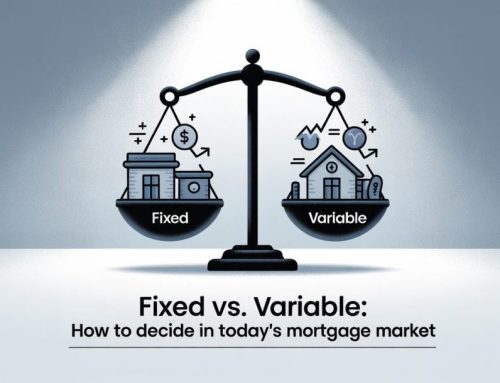In the Bank of Canada’s rate announcement on January 25th, they told us exactly what we wanted to hear. They are pausing rate hikes.
Their report stated that they expect inflation to reach 3% by the middle of this year and back to their 2% target in 2024, which was on track with their previous projections.
All great news.
But as many have learned over the past year especially, forecasts can and do change.
No one predicted the pandemic which resulted in the Bank of Canada slashing their rate by a far greater margin than previously anticipated.
In early 2022, it was the war in Ukraine which resulted in further damage to the supply chain which resulted in the BoC increasing by far more than previous forecasts expected.
Now it’s looking like the BoC may need to increase their rate again on their next scheduled rate announcement date on March 8th.
But why?
Employment and its Effect on Inflation
The weak supply chain is probably the largest contributor to the inflation problem. Another is employment. Markets expected the US to add 185,000 new jobs in January. But when the employment report was released on February 3rd, the actual number was 517,000. Almost three times the market expectation.
Then the Canadian employment numbers were announced. The market expectation was an additional 15,000 jobs. But the actual number of new jobs reported turned out to be 150,000. 10 times the forecasted amount.
The strong employment numbers were not what the Bank of Canada wanted to hear.
But why does employment matter so much?
A tight job market means that employers are forced to pay higher wages. This increases their overhead which means they need to increase prices to remain profitable.
It becomes quite challenging for the BoC to reach their 2% inflation target when wages are increasing by 5%.
To offset the strong employment numbers, odds of another rate hike on March 8th increase tremendously.
While the BoC said they have paused their rate hikes, they also stated that they would increase further if needed. Well, the new employment numbers indicate that more may now be needed. As they have stated multiple times before, they are prepared to do whatever it takes. This means that they are not opposed to additional rate hikes if that is what they need to do.
The BoC has already increased their rate by a whopping 4.25% since this time last year. Anyone currently in a variable rate mortgage is feeling the financial pressure as they watch their monthly cash flow continue to decline.
For anyone on a variable rate with a tight budget, now may be the time to convert your variable rate into a fixed. We know that the rates will start to come down eventually. But it’s starting to look like it may not happen as fast originally expected.
Fixed Mortgage Rates Are Rising Again
Fixed mortgage rates are largely priced based on bond yields. As the yields had been trending downward since the beginning of 2023, there was downward pressure on fixed mortgage rates which led to some recent rate cuts.
But when the the US employment numbers were made public on February 3rd, the bond market reacted with an immediate upward spike. They have been trending upward precipitously ever since and were further fueled by the release of the Canadian employment numbers last week. They continue to rise today up another 2.94% over yesterday at the time of writing. They have risen roughly 19% since the US employment numbers were announced on February 3rd, placing significant upward pressure on fixed rates.
Fixed mortgage rate increases are imminent.
The bond yields are now at their highest level since November 10th, at which time the lowest 5 year fixed rate for an insured mortgage was 4.89%. As of today, the lowest rate for a mortgage in the same category is as low as 4.39%. It’s very possible that we’ll see the lowest insured rate increase back up to 4.89% as a result. As of now, it remains 4.39% but this rate will likely be gone in coming days… if not sooner.
Two lenders have already announced 5 year fixed rate increases of 0.15% bring their lowest rate to 4.64%. I would expect increases from other lenders before the end of the day to day. Some lenders may try to hold the current rates a little longer, but it’s just a matter of time before they increase as well.
For anyone that has a mortgage renewal or a purchase closing within the next 120 days, I would recommend reaching out to us right away to ensure you get in ahead of the expected rate increases.
Conclusion
The forecasts are always changing. Sometimes they change for the better, but that hasn’t been the case lately. Just a few weeks ago, it looked like we had seen the last of the rate increases. But with new economic data, in this case employment numbers, the forecasts can change.
In the Bank of Canada’s rate announcement back on October 28, 2020, they expected to hold their rate until into 2023. In their announcement on June 9, 2021, they didn’t expect to move until the later half of 2022.
Circumstances can change and all anyone can do is go based on the information they have as of that date. No one has a crystal ball and anything can happen.








Leave A Comment